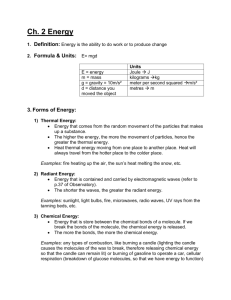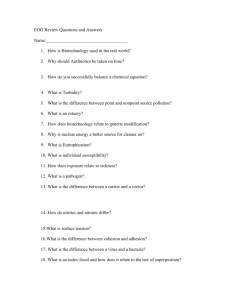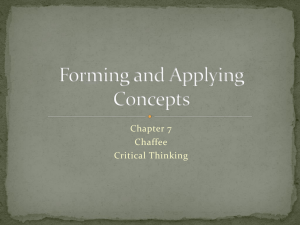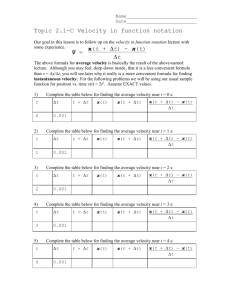Practical ideas for thinking
advertisement
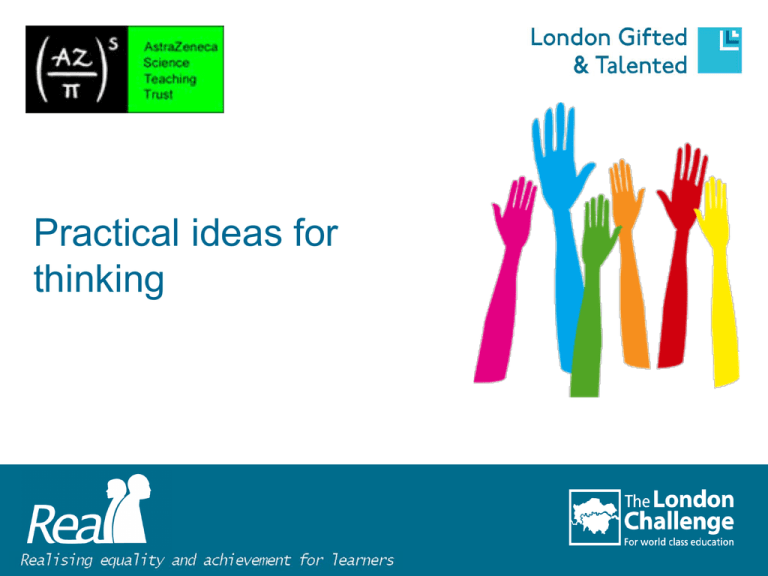
Practical ideas for thinking What am I? 1. What do you think it is? 2. How big do you think it is? 3. Where do you think it might be found? 4. What do you think it might be associated with? 5. Why might it be important? What am I? 1. What do you think it is? 2. How big do you think it is? 3. Where do you think it might be found? 4. What do you think it might be associated with? 5. Why might it be important? How does the activity relate to thinking? You have to use analytical thinking to make sense of these pictures. Once you have analysed the objects you need to evaluate the relationships between each observation. This means you are using critical thinking to make relationships and evaluate the evidence. Making others understand depends upon your communication skills. Explaining the pictures and deducing where they might be found means you have to be creative in developing a reasonable explanation, but one that is scientific and relies on all the evidence available. In other words your explanation can only be as good as the range of evidence available and how well you relate the bits of evidence to each other. How well someone understands your ideas depends the precision of your language and the effectiveness of any model you describe. Tell the story of the graph Here is a graph of the motion of a person walking across the room. It shows velocity plotted against time. You are to interpret the graph and walk along a line according to its shape Tell the story of the graph Suggest how you might label the y-axis and what values would you place on it? Suggest how you might label the x-axis and what values would you place on it? Work out what the curve shows and interpret the explanation into a walk along the floor Tell the story of the graph Explain why it goes up and down and has flat bits – what is happening at these points? Explain your interpretation of the graph and your walk using some values and try to calculate some values for the changes on the curve Explain why ‘velocity’ is used and not speed Give the change points some appropriate values for the rate of change How does the activity relate to learning? A pictorial thinking game requiring memory, deduction, and creative thinking. It involves group discussion to develop a collective explanation of a strange graph. The important thing here is not a right answer but an answer based upon deductions using the available evidence and personal knowledge. Six degrees of separation Link two pictures together by six steps or statements The last idea of the previous sentence starts the next All photos courtesy of Barry Meatyard Caterpillar In 6 steps… Candle A response from a Y10 pupil 1. A caterpillar is the larva of a butterfly 2. Butterflies are insects which are classified as animals 3. Animals respire in order to provide themselves with energy 4. Energy can exist in many forms 5. One form of energy is thermal energy 6. Thermal energy and light energy are produced when a candle burns Time Velocity Mass Periodic table Soil Leaf Explanation: how activity relates to learning This activity reveals how learners have linked the concepts in their heads. It works by asking you to think about the links between concepts and the pathway to take to link them. This encourages reasoned and analytical thinking and because the photos are often not necessarily obviously linked the process promotes creative thinking.



